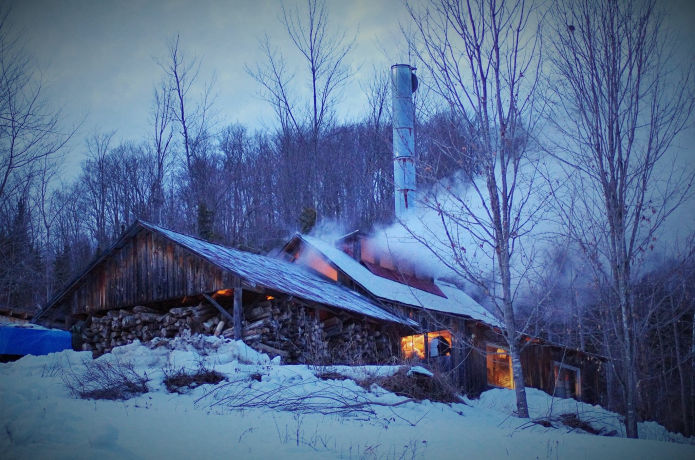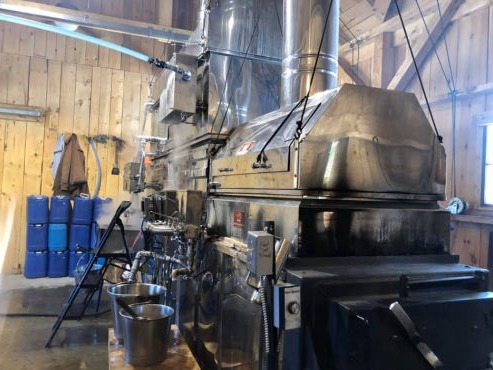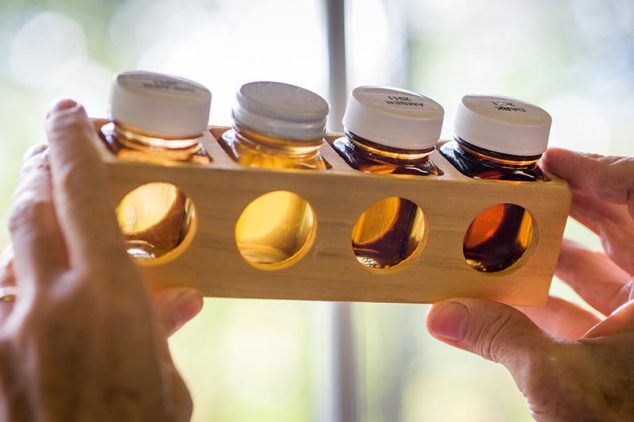
The old Wood Family sugarhouse was built in 1970 on the southeast side of Kirby Mountain in Kirby, Vermont. This sugarbush was one of the first in the area to be piped with plastic tubing, which ran downhill from the tapped trees to the sugarhouse's holding tanks.
Before European settlers colonized the area, Native Americans in the northeast processed maple sap by collecting the sugary liquid in bark vessels, leaving it out to freeze, and removing the ice to concentrate the sugar. The sap was also boiled by adding hot stones to the wooden vessels. When European settlers arrived with iron kettles, they began producing syrup by boiling sap over open fires.
Today, sap is often still gathered the old-fashioned way by tapping trees with a metal spout from which a bucket is hung. More modern sugarmaking operations use plastic tubing to connect taps to a network of pipes that transport sap to holding tanks in the sugarhouse. From there, the sap flows into a heated evaporating pan where it is boiled until the sugar is concentrated to a perfect density and the syrup can be poured off for filtering and canning.

